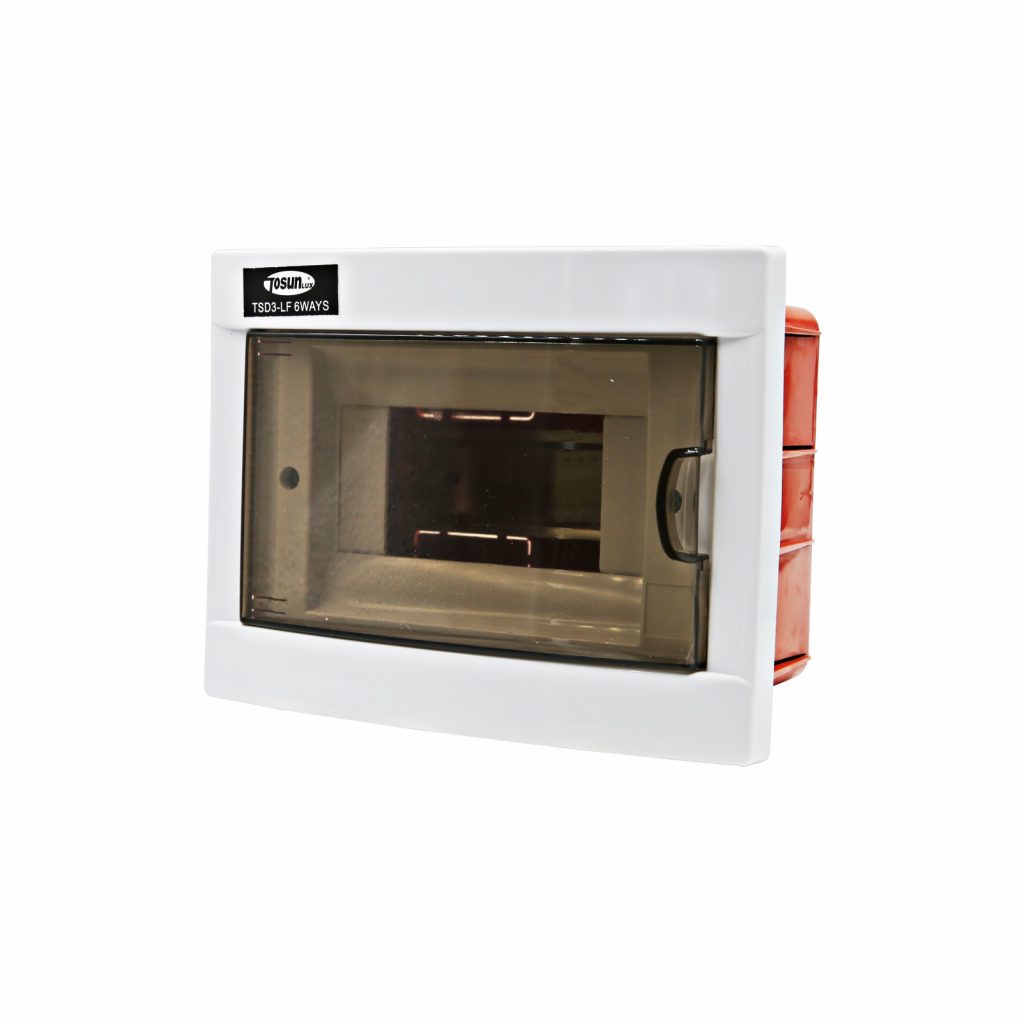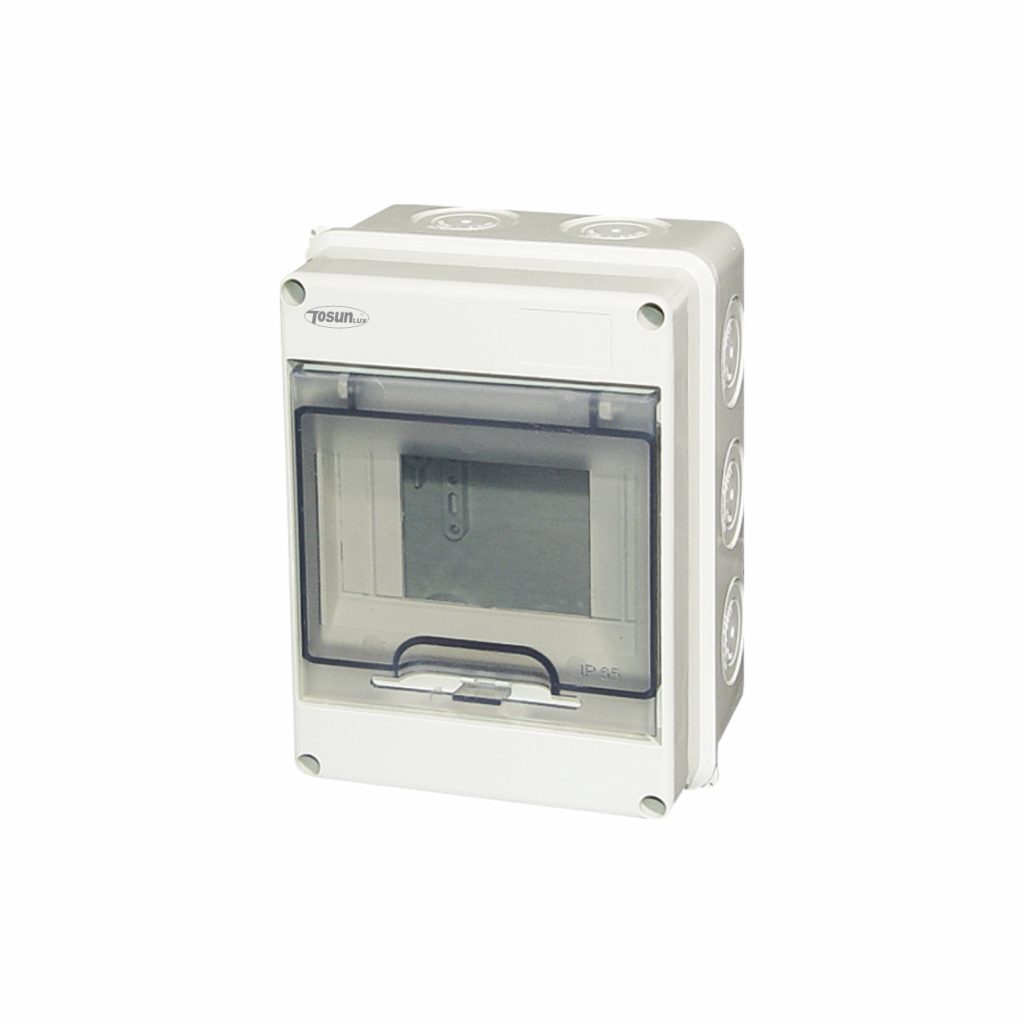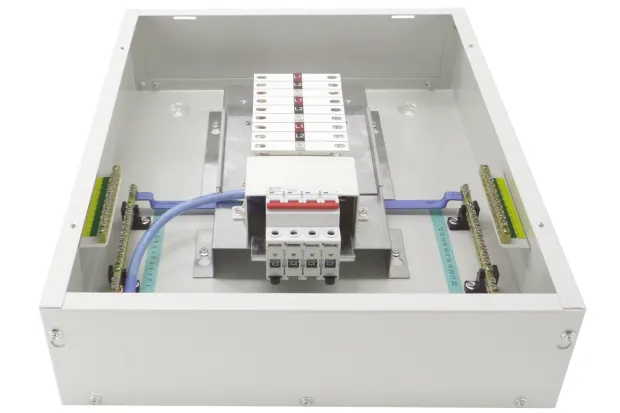What Is A Distribution Board?
Table of Contents
ToggleDo you wonder how electric power is distributed in different parts of your home?
Well, a distribution board or distribution box helps to do that!
As the name goes, it is the load center and power distributor. It is the main part of the power supply system in your home. This board helps to slip the main incoming power to various different smaller circuits.
For example, the incoming electric power in your home reaches the board, and then then the board divides or distributes it to other parts, i.e., bedroom, living room, kitchen, bathroom, etc.
There is one main circuit as well as multiple subsidiary circuits on the board. While the main circuit helps you to control the electric supply in the entire house, subsidiary circuits help you to control the power in individual rooms.
If you want to know more about the distribution board, follow this guide. In this article, we are going to discuss the distribution board, its types, and uses.
What is a Distribution Board?
A distribution board is essential for organizing and directing power in electrical systems. It splits the main power source into different circuits. It also enables safe power distribution throughout a building.
Distribution boards are also called low-voltage distribution boards or wiring DB boards.
Key Components of a Distribution Board
Each component in a low-voltage distribution board serves a unique purpose:
Main Switch: This controls the flow of electricity in the building. The main switch shuts off power to the whole board during emergencies to stop accidents.
Circuit Breakers: Each circuit connected to the distribution board has a dedicated breaker. Circuit breakers watch the flow of electricity. They turn off power to a circuit if there’s an overload, short circuit, or problem. They are key to preventing fires or electrical shocks.
Residual Current Devices (RCDs): RCDs detect ground faults and disconnect power. They help protect people from electric shock by cutting off power when there’s a fault. They are also known as Ground Fault Circuit Interrupters (GFCIs).
Busbars: Busbars are copper or aluminum strips that send power to each circuit on the board. They work as a central hub, connecting breakers and keeping the current steady.Neutral and Earth Bars: These bars collect neutral and earth wires from various circuits. This ensures that each circuit has a safe return path for the current, preventing faults or fires.
Types of Distribution Board:
There are various types of distribution boards available for household and commercial use. Here are the two main types.
- Single Door Distribution Board:
Single Door Distribution Boards are a popular choice for many different types of applications. They come with a din rail and neutral link for easy installation and are available in 4-way, 8-way, and 16-way configurations.
These boards can be protected against dust, water, and other elements up to IP54. Because they are used inside a building, they have the added advantage of providing a stylish look for your premises.
Single door distribution boards are typically used in single-family homes, as they are less complex. It can be used in both new and existing homes. These boards are typically four-way. They come in a wide range of configurations, from standard to custom.
- Double Door Distribution Board:
A Double Door Distribution Board is a specialized electrical panel that distributes electric current to various electrical appliances. These boards are used in residential, commercial, and industrial settings and are designed with advanced technology for heavy-duty operations.
The products are available in a wide variety of sizes, standard specifications, and designs. It is an advanced model of the Single-Door Board.
This type of distribution board features an array of advanced components and wire sets, including a neutral bar and earth bar. In addition, this unit protects against short-circuiting and overload conditions.

Tosunlux offers distribution boards with reliable safety features, ideal for any electrical system. Ask about our wholesale options!
What are Distribution Boards Used for?
The electrical system in a building depends on distribution boards to get power to various parts of the building. The main cable feeds into the board and is then distributed via breakers to secondary circuits.
This proper power distribution is necessary to allow devices to operate properly and safely. This is crucial to the safety of appliances and the home.
The main electrical supply system for a house is the distribution board. This board is used to distribute power to all the secondary circuits. The distribution board is essential for the proper performance of devices and appliances. It’s also essential for the safety of the appliance and home.
Distribution boards are used for different purposes in a building. For example, the main breaker panel is used for a residential or commercial unit. It is located downstream from the meter cable. In this configuration, the main breaker panel indicates the circuit amperage rating.
In contrast, the main lug panel is used when the incoming cable is upstream. In this case, the distribution board is located upstream and features a separate disconnector.
One key component of a distribution board is the fuse. This device automatically shuts off the power when the circuits are overloaded.
A fuse prevents people from touching components on the board. It can also help protect the property from fire. If you have to install a distribution panel in a basement, make sure to use one that is out of the way.
Safety Tips When Using Distribution Boards:
When installing distribution boards, you should make sure to keep them out of reach of water or basements. Most electrical codes require that they be placed at least 2200 mm above the floor.
Another important safety tip is to cover it when not in use. This will prevent corrosion of wires and fixtures. You should also install warning signs to keep children and elderly people from touching hazardous components.
A distribution board should be installed properly. It is important to have adequate space for the wires to pass. The boards should be installed according to the need and must be easy to maintain. Remember to use a blanking plate cover to protect the board from any moisture and other hazards.
Make sure you know which circuits the distribution board will serve. If you plan to install the boards for residential or commercial use, you should consider the safety standards of the building.
When installing distribution boards, be sure to protect them from abuse. The wiring should be well-ventilated to avoid corrosion. Be sure to label each circuit. The wiring should not hang outside the board.
It’s important to follow all of the safety guidelines when using distribution boards. This will prevent you from putting your safety at risk.
Benefits of Using a Low Voltage Distribution Board
- Enhanced Safety: A low-voltage distribution board separates circuits. This helps prevent overloads and fires. This makes it a safer setup for both homes and businesses.
- Control and Flexibility: Each circuit is independently connected, allowing easy maintenance and control. This setup lets you turn off one circuit for repairs while keeping power on in the rest of the building.
- Efficient Power Management: Low-voltage distribution boards allow for balanced distribution. This ensures every part of the building receives stable power. This balance improves energy efficiency and reduces the chance of power disruptions.
FAQ
What is a distribution board used for?
A distribution board directs electricity from a main source to smaller circuits within a building. This ensures safe and effective power distribution.
What are the main components of a distribution board?
The main components include the main switch, circuit breakers, RCDs, busbars, and neutral and earth bars.
How does a distribution board enhance safety?
It stops overloads by keeping circuits separate, reducing the risk of fires or shocks. RCDs also protect users from potential ground faults.
How often should a distribution board be inspected?
Distribution boards should be checked every 1-3 years to ensure safety and meet local codes.
Can a low-voltage distribution board be used for both commercial and residential buildings?
Yes. However, commercial buildings may require boards with additional features for high-capacity systems.
Tel: +86-577-88671000
E-mail: ceo@tosun.com
Skype: tosunelectric
Wechat: +86-139 6881 9286
WhatsApp: +86-139 0587 7291
Address: Room No.1001 Wenzhou Fortune Center,Station Road, Wenzhou, China
REQUEST A QUOTE
WhatsApp us
 : +86-139 0587 7291
: +86-139 0587 7291 English
English Español
Español Русский
Русский Français
Français العربية
العربية Português do Brasil
Português do Brasil Українська
Українська Türkçe
Türkçe Polski
Polski Nederlands
Nederlands Italiano
Italiano Bahasa Indonesia
Bahasa Indonesia हिन्दी
हिन्दी اردو
اردو አማርኛ
አማርኛ Հայերեն
Հայերեն ไทย
ไทย Монгол
Монгол فارسی
فارسی Shqip
Shqip Ελληνικά
Ελληνικά





